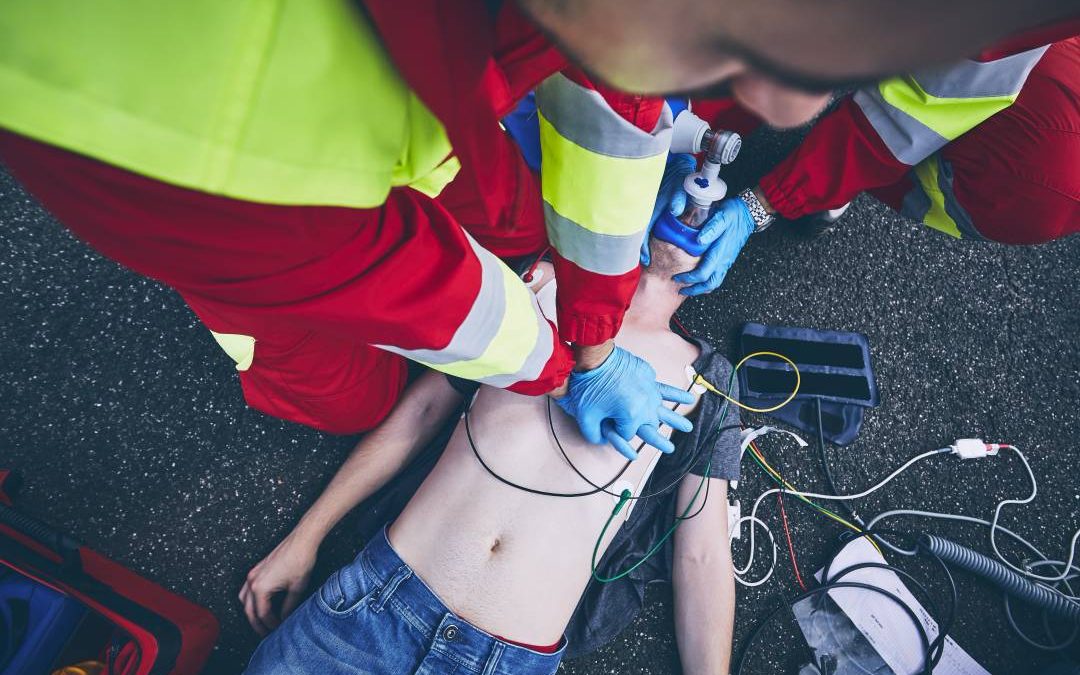Electric shock can cause life-threatening injuries and depends on various factors. Injuries caused by electric shock depend on the type of current (AC or DC), the voltage of the current passing through the body, the general health of the injured person, the path taken by the current, the amount of energy, the time of exposure to the electricity, the resistance and the area affected by the current. An electric shock can result in a number of signs and symptoms that can sometimes be fatal for the injured person. Electrical current usually follows the path of least resistance, often causing injury to neurovascular pathways.
INJURIES CAUSED BY ELECTRIC SHOCK MAY INCLUDE:
- Arrhythmias of the heart
- Cardiac arrest
- Respiratory arrest Burns
- Pain and muscle contractions
- Injuries of the spine and extremities
- Fractures and dislocations
- Changed consciousness
- Nerve injuries
- Blood clotting disorders
FIRST AID:
- Ensuring the safety of the accident scene is of utmost importance.
- Before approaching an injured person, it is essential to remove any danger to both the rescuer and the injured person.
- Check that there is still contact with the electrical source without compromising your safety.
- Do not attempt to remove high-voltage lines by improvised methods; rather leave it to authorized personnel.
- If possible, ask the electricity provider to turn off the electricity.
- Be careful not to become the next victim yourself.
Secure the airway so that breathing is normal and oxygenation is ensured.
If the person is not breathing and there are no signs of life, begin CPR following basic life support protocol. If airway, head, or neck burns are present, consider early intubation due to potential airway soft tissue swelling and obstruction.
Immobilize the cervical spine due to potential neck muscle contractions and resulting injuries.
Treat cardiac arrhythmias according to advanced arrhythmia support protocols.
- Ventricular fibrillation – defibrillation (200 J, 360 J, 360 J for biphasic defibrillators, and 360 J for the first and all other shock deliveries using monophasic defibrillators), and basic and advanced life support procedures.
- Asystole – basic and advanced life support procedures.
After breathing and cardiac problems are under control, assess and treat other injuries. Carefully remove burnt clothing and shoes, avoiding additional injuries. Do not tear off clothing stuck to wounds; instead, try cutting it off and gently removing it. Thermal burns can occur at the entry and exit points of the electrical current, which can also ignite clothing. Remove rings, chains and bracelets from the injured person. Place EKG monitoring on all persons who have experienced an electric shock. Open two IV lines and administer fluid replacement during transport to the hospital. Treat burns according to the protocol, prevent further injuries, cool the burn briefly (1-2 minutes) and cover it. Use special gel-based burn dressings, e.g. Water-Jel, to cool the burn to a certain depth without causing hypothermia, provide antibacterial action and prevent further progression of the burn injury. If you cool the burn with water or saline, be careful not to cause hypothermia, as this can cause more serious injury. Cool only the burn, not the whole body. Thoroughly examine the patient to identify and treat serious, life-threatening injuries. Depending on the burn assessment, consider transporting the patient to a burn center. Burns do not have to be extensive to be severe. Severe burns include burns to the respiratory tract, head, neck, chest, joints, genitals, so please keep that in mind. If you are not a medical professional, call 112 or 194 immediately, explain what happened, provide the exact location of the incident, the phone number you are calling from, and follow the dispatcher’s instructions.



0 Comments